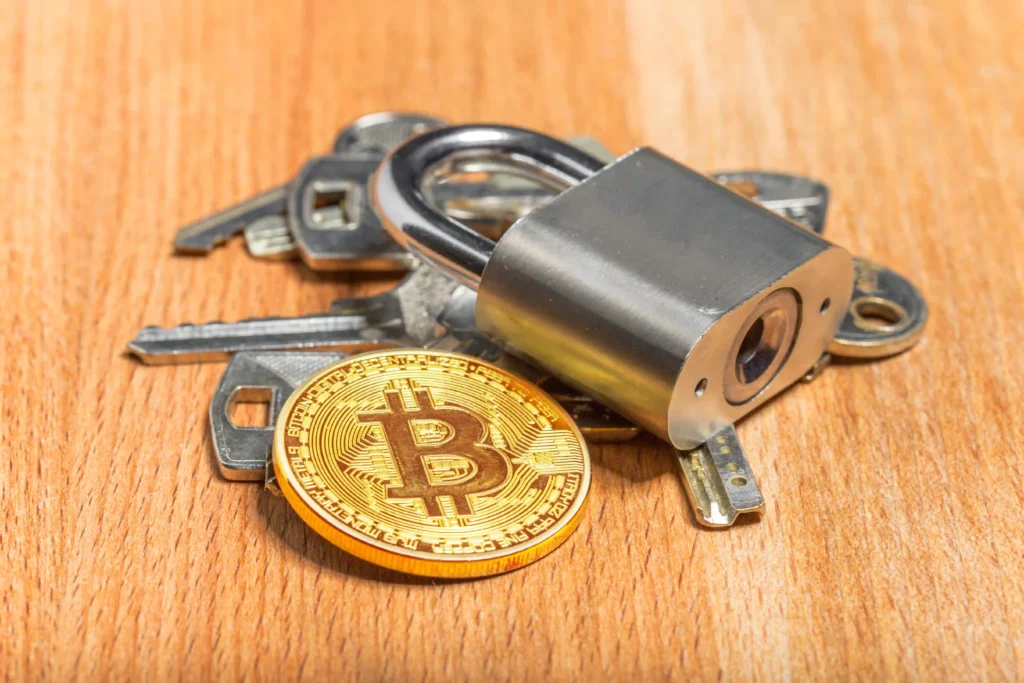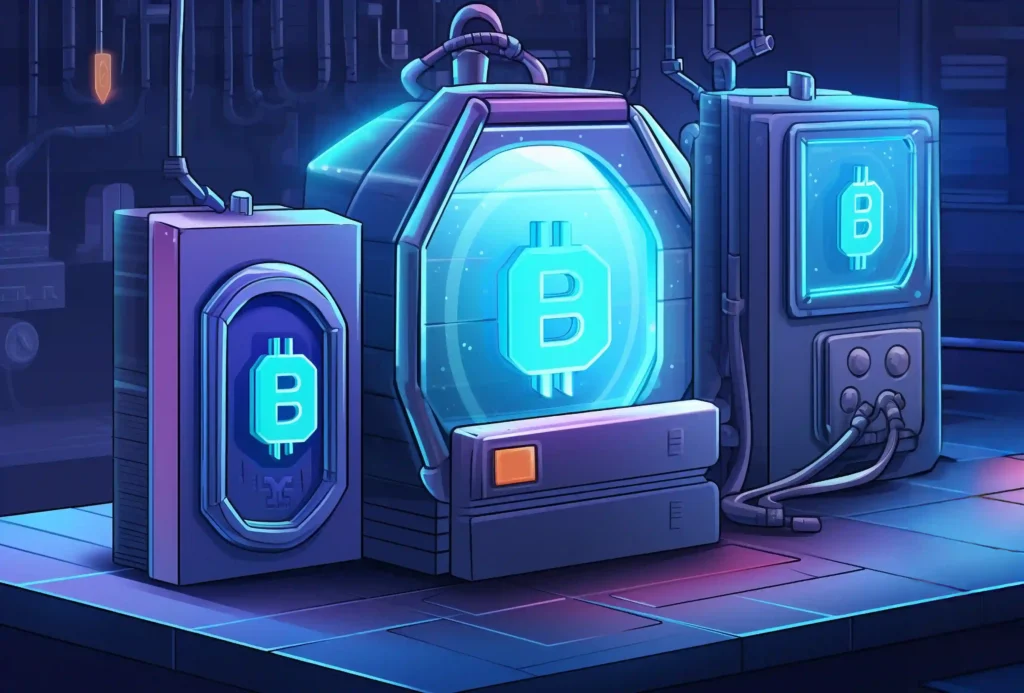Your Proven Secure Crypto Wallet: Defense Made Effortless
In a world where cryptocurrency has gone mainstream, safeguarding your digital assets is more critical than ever. The explosive growth of decentralized finance (DeFi), Web3 ecosystems, NFTs, and crypto sports platforms demands heightened security measures. The proliferation of hacks, phishing scams, and wallet vulnerabilities has exposed countless investors to losses. Thus, your quest for a Secure Crypto Wallet isn’t just prudent—it’s essential.
Global Crypto Sports, as your go-to news hub for the intersection of crypto and sports, underscores the urgency: whether you’re trading tokens linked to sports initiatives, participating in play-to-earn games, or supporting athlete-backed NFT drops, your crypto wallet is your vault. Make no mistake, choosing the wrong wallet is like leaving your valuables in an open field. This article aims to make defense effortless by guiding you to a wallet architecture that is proven, secure, and tailored to your needs.

Key Definitions & Concepts: Demystifying the Crypto Landscape
To help beginners and intermediate users alike, let’s define some foundational terms:
- Blockchain: A distributed ledger that records every transaction across a network of computers. Think of it as a digital chain of blocks, each block containing a batch of transactions. Transparency and immutability are its crowning features.
- DeFi (Decentralized Finance): Financial systems built on blockchain technology, enabling lending, borrowing, trading, and more—without traditional banks or intermediaries.
- Web3: The next-generation internet powered by blockchain, where decentralized apps (dApps) and digital ownership reshape how we interact online.
- Hot Wallet: A crypto wallet connected to the internet—e.g., software, browser, or mobile apps. Convenient, but vulnerable to online threats.
- Cold Wallet: A wallet kept offline—examples include hardware devices and paper. By remaining disconnected, they drastically reduce exposure to online attacks.
- Hardware Wallet: A specialized device (like Ledger or Trezor) built to securely store your private keys offline.
- Mobile Wallet: Apps installed on your smartphone. Easy to use, highly accessible—yet still vulnerable to malware and phishing.
- Decentralized Wallet: Wallets in which you’re in full control of private keys, not a third party. Also known as “non-custodial.”
- Crypto Wallet Security: Encompasses the practices, tools, and protocols that keep your private keys—and thus your crypto—safe from theft or loss.
- Wallet Backup: Strategies like seed phrases or hardware backups that let users recover access if the wallet device is lost or corrupted.
What Makes a Proven Secure Crypto Wallet?
A. Core Security Pillars
- Private Key Control: Only you hold the private key—crucial for true decentralization.
- Encryption: Your wallet’s data is encrypted both at rest and in transit (if applicable).
- Tamper-Resistance: Especially in hardware wallets—designed to detect physical compromises.
- Open-Source Code: Allows community audits, exposing backdoors or vulnerabilities.
- Multi-Layered Authentication: PINs, passphrases, and optional two-factor authentication (2FA) add protection.
B. Proven Record
- History of security audits: wallets with regular, public smart contracts or firmware audits are more trustworthy.
- Low breach history: wallets that have not been successfully hacked are more reliable for long-term storage.
C. User-Friendly Recovery
- Seed phrase backup: Easy to store and test (without exposing it online).
- Backup mechanisms: Options like microSD card backup or split backups (Shamir’s secret sharing) for hardware devices.
Secure Crypto Wallet Types: Options & Use Cases
A. Hardware Wallets (Cold Wallets)
Pros:
- Inherently offline—immune to phishing, malware, and remote hacks.
- PIN-protected, often with a built-in screen to verify transaction details.
Cons:
- Requires purchase (cost can range from ~$60–$200).
- Slightly less convenient—you must connect it to your computer/device.
Top Wallets:
- Ledger Nano X / Ledger Nano S Plus
- Trezor Model One / Trezor Model T
B. Mobile Wallets (Hot Wallets)
Pros:
- Instantly accessible for trading, staking, or interacting with dApps.
- Often user-friendly and mobile-app-centered—great for on-the-go needs.
Cons:
- Always online—target for malware, phishing, and SIM-swapping.
Best Practices:
- Use the official app only.
- Enable biometric or PIN unlock.
- Stick to wallets with strong reputations (e.g., MetaMask, Trust Wallet).
C. Desktop / Browser Wallets (Hot Wallets)
Pros:
- Convenient for heavy users, especially when interacting with DeFi.
Cons:
- Exposed to browser vulnerabilities, keyloggers, and phishing pages.
Mitigation:
- Only use desktop wallets on secure machines.
- Activate hardware wallet integration to isolate private keys.
D. Paper Wallets
Pros:
- Simple offline storage—just a printed seed/private key.
Cons:
- Easily lost or damaged.
- If generated on an insecure computer, risk of compromise.
Securing Digital Assets of a Crypto Sports Enthusiast
Case Study:
Meet Alex, a crypto sports investor who trades tokenized sports collectibles and stakes tokens in play-to-earn tournaments.
Alex’s Wallet Strategy
- Daily Use: A mobile wallet (e.g., Trust Wallet) for small trades—the “hot wallet,” with only modest crypto balances.
- Long-Term Holdings: Ledger Nano X hardware wallet storing high-value tokens, athlete NFT memorabilia, and staking positions.
- Backup: Ledger’s seed phrase printed and stored in a secure location; also duplicated using a flame-proof backup card.
- Process Workflow:
- Use a mobile wallet for low-value transactions, such as in-game utility or quick swaps.
- For high-value operations (transferring rare NFTs or large token transfers), connect Ledger to a secure computer and authenticate via the device screen.
- Double-check wallet address and transaction details.
- After use, disconnect the hardware wallet and store it safely.
Outcome: Alex avoids phishing attacks (thanks to hardware wallet confirmations), minimizes risk by segregating wallets by purpose, and has a reliable recovery path.

Benefits vs. Risks Overview
| Benefits | Potential Risks |
|---|---|
| Full control over private keys (decentralization, Secure Crypto Wallet) | Physical theft or damage of the hardware wallet |
| Strong encryption and tamper-proof hardware devices | A seed phrase in digital format can be phished or hacked if stored poorly |
| Layered authentication (PINs, passphrases) | Poor backup strategies (e.g., losing paper seed backup) |
| Reduced exposure to online attacks (cold wallets aren’t connected) | Hot wallets are susceptible to phishing, malware, SIM-hijacking |
| Recovery via seed phrase or backup | Seed phrase in digital format can be phished or hacked if stored poorly |
Actionable Advice for Beginners & Intermediate Crypto Investors
Beginners
- Start Small, Start Simple
- Download a trusted mobile hot wallet (e.g., Trust Wallet, MetaMask).
- Keep minimal funds in it for initial exploration.
- Understand Wallet Concepts
- Learn the difference: hot vs cold wallet, custodial vs decentralized, seed phrase vs private key.
- Secure Your Seed Phrase
- Write it on paper, not digitally.
- Store in a safe, hidden, physical place (safebox or safe deposit).
- Never Share Your 12/24‑word Phrase or Private Keys
- No legitimate service will ask for these—protect them like your banking PIN.
- Stay Vigilant Against Phishing
- Always verify website URLs.
- Bookmark official wallet sites/apps.
- Avoid clicking random links in messages or emails.
Intermediate Investors
- Acquire a Hardware Wallet (Cold Wallet)
- Choose models with a strong reputation (Ledger, Trezor).
- Always buy from the manufacturer to avoid tampered supply chains.
- Split Your Wallets
- Use multiple wallets per asset category (e.g., one for NFTs, one for token holdings).
- Practice Backup Strategies
- Use flame-proof, waterproof cards (e.g. Cryptosteel).
- Consider Shamir backup (split seed into parts).
- Test Recovery Procedure
- Periodically simulate wallet recovery to ensure your backup works.
- Embrace Redundancy & Physical Security
- Store backups in separate locations (e.g., safe deposit + home safe).
- Consider fireproof and floodproof solutions.
- Use Hardware Wallets with dApps.
- When interacting with DeFi protocols via desktop or mobile wallets, connect a hardware wallet for enhanced security.
- Regularly Update Firmware & Software
- Apply updates from official sources only.
- Read release notes for security patches and audit results.
Why Secure Crypto Wallet Reigns Supreme for Global Crypto Sports Fans
When Global Crypto Sports reports on crypto-ready athlete NFT drops or tokenized fantasy teams, readers want the insider scoop—and they need protection too. A Secure Crypto Wallet ensures your tokens and sports collectibles aren’t just investments—they’re secure assets.
Keywords integrated: best crypto wallet 2025—stay ahead by choosing one of the best crypto wallet 2025 options. These include next-gen hardware wallets with multi-signature support and biometric PINs.
Hot Wallet vs Cold Wallet: Which Wallet Type Fits You?
- Hot Wallet: Ideal for daily trades, quick dApp access. Think mobile wallet or browser extension—great for scouting new crypto sports drops.
- Cold Wallet (Hardware Wallet): Best for long-term value—like rare athlete NFTs or staked token positions. Though not as “comfortable” or speedy, using the best crypto wallet 2025 as a cold wallet (e.g., Ledger or Trezor) elevates security.
Choosing the Right Hardware Wallet: Decentralized Wallet Means Full Control
Early investors often ask: “Which decentralized wallet should I trust?” The highest-rated cold wallets offer both a user-friendly experience and rock-solid cryptographic protection. Whether it’s storing your tokens from Global Crypto Sports partnerships or plain old Bitcoin, these tools let you be the only custodian of your keys.
Crypto Wallet Security & Wallet Backup: Your Frontline Defense
No matter which crypto wallet you choose, prioritize:
- crypto wallet security: encryption, strong PINs, biometric layers
- wallet backup: physical seed phrase, secure storage, redundancy
This combo gives you both effortless defense and peace of mind—because even in 2025, threats still lurk.
FAQs: Your Questions About Secure Crypto Wallets Answered
Let’s tackle 7 common questions:
1. What is the most secure type of crypto wallet?
A hardware wallet (cold wallet) is widely considered the safest for long-term storage. Because it isn’t connected to the internet, it greatly minimizes exposure to hacking or phishing.
2. Is a mobile hot wallet safe to use?
Yes—for day-to-day use and small sums. Use reputable apps like Trust Wallet or MetaMask, enable biometric/PIN security, and keep only a limited balance. For large amounts, always use a hardware wallet.
3. What should I do if I lose my seed phrase?
Without your seed phrase or backup, your funds are unrecoverable. Always write it down in a physical format and store it securely. For extra security, consider creating multiple backups in separate locations.
4. Should I ever store my seed phrase digitally?
Not. Digital storage (screenshots, email drafts, cloud storage) is vulnerable. Best practice: write it by hand on durable, non-digital media and secure it physically.
5. How can I verify a hardware wallet is genuine?
Buy directly from the manufacturer or authorized reseller. Ensure the packaging is sealed. On first use, the device should present a randomly generated seed phrase; if it comes preloaded, that’s a red flag.
6. What’s better: hot wallet or cold wallet?
Neither is universally “better.” A hot wallet is convenient for day-to-day transactions. A cold wallet offers top-tier security for long-term holdings. Smart users often use both—“hot” for daily use, “cold” for storage.
7. Can I use a software wallet with dApps safely?
Yes—especially if paired with a hardware wallet. Tools like MetaMask can connect to your hardware wallet, meaning signatures occur on the device (not exposed to your browser). This dramatically improves safety.
Conclusion & Call-to-Action
Your journey toward effortless defense must start with a conscious choice: a secure crypto wallet. Whether you’re tracking athlete tokens via Global Crypto Sports, collecting rare sports NFTs, or simply exploring the DeFi ecosystem, the right wallet is your vault, vault guard, and recovery plan, all in one.
Here’s your next move:
- Start by downloading a trusted mobile (hot) wallet—ideal for low-risk daily operations.
- Invest in one of the best crypto wallets 2025 models—preferably a hardware (cold) wallet with a strong security pedigree.
- Securely back up your wallet using offline, physical methods.
- Always keep your private keys and seed phrase private and offline.
- Stay savvy—read updates from Global Crypto Sports and other trusted sources to protect your crypto-assets.
Safeguard your treasures like an athlete protects their legacy—with strength, precision, and unwavering discipline.
